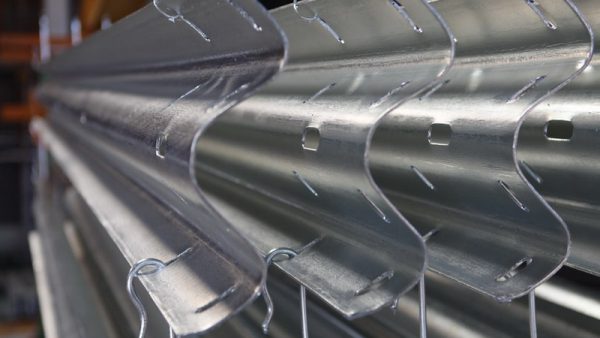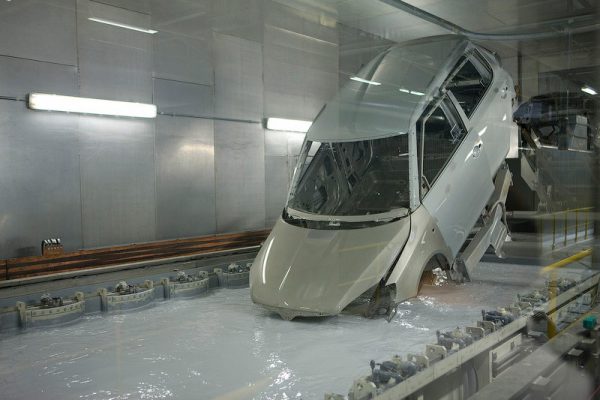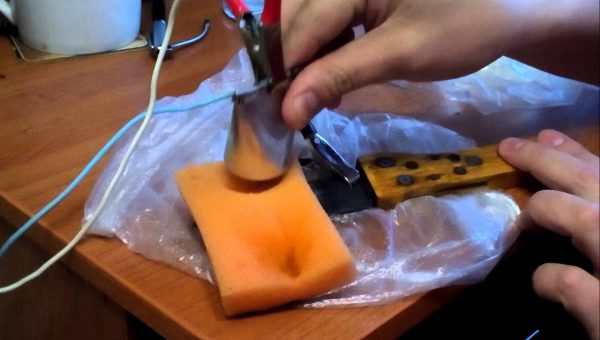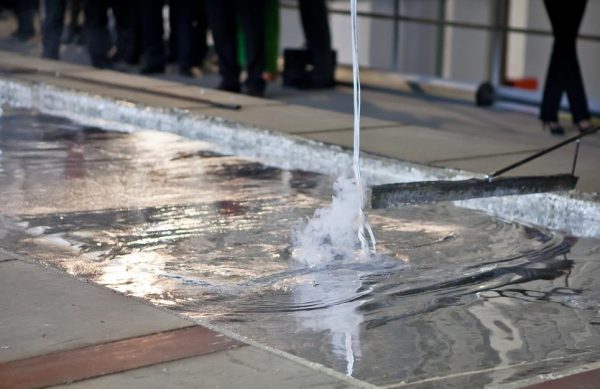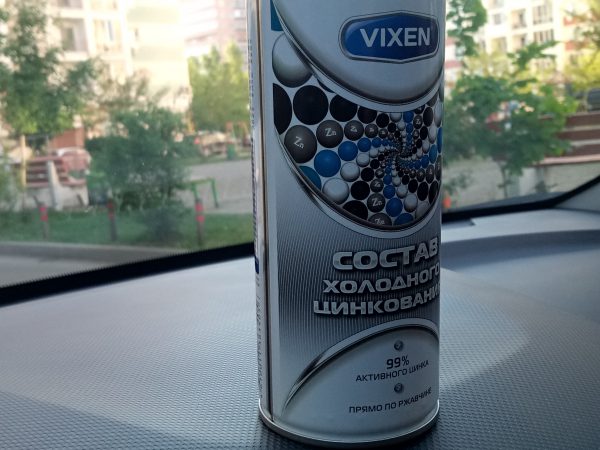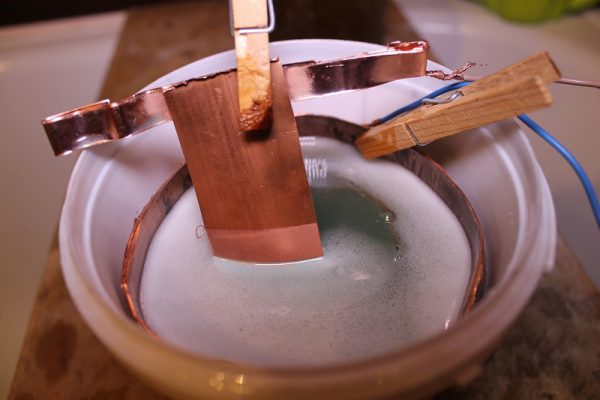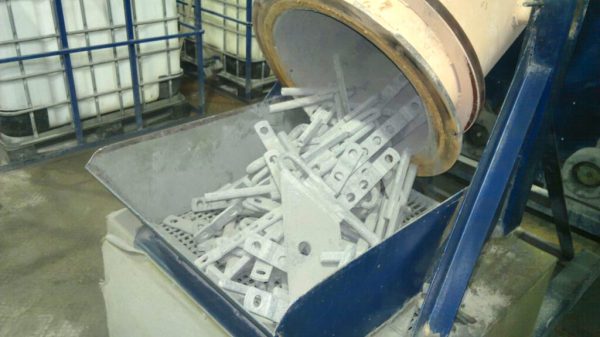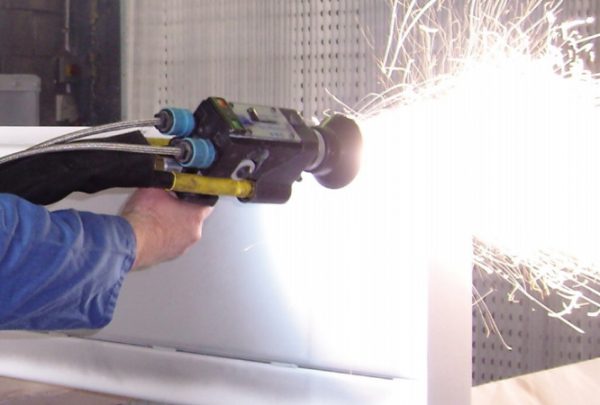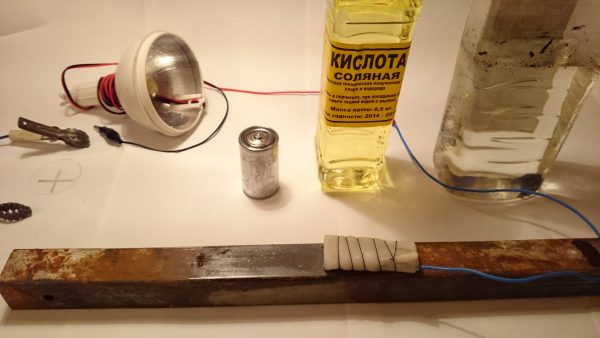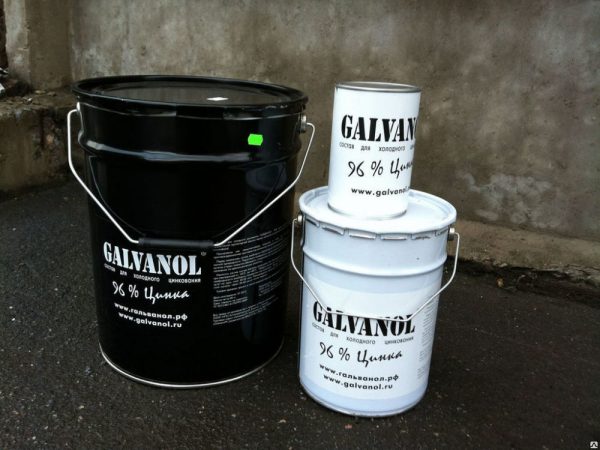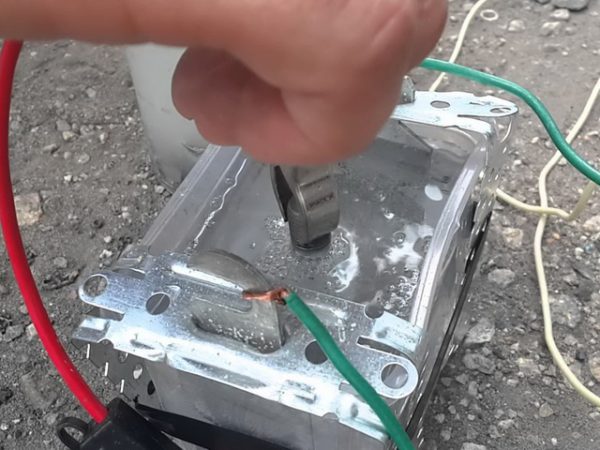There are various metal protection methods that can help reduce the likelihood of corrosion. The meaning of technology is to treat the surface of products with special substances and solutions. This allows you to create a thin but durable film that prevents the penetration of moisture, oxygen, steam, aggressive elements.
- Why galvanizing is needed
- Features and Benefits
- Basic galvanizing technologies
- Hot dip galvanizing
- Cold galvanizing
- Galvanic method
- Thermal diffusion galvanizing
- Thermal spraying of zinc
- Galvanizing at home
- Product galvanization
- Self cold galvanizing
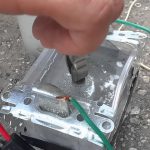
One of the most popular is galvanizing technology or galvanizing. Subject to all the rules and sequence of actions, galvanizing can be done with your own hands.
Why galvanizing is needed
Zinc plating or galvanizing is a popular way to protect steel from corrosion. Along with other anode coatings (nickel, chromium), the method is most often used for applying to:
- structures made of iron and other metals;
- power transmission towers;
- equipment on ships, in ports;
- road barriers.
Galvanization is used in the automotive industry: with the help of a thin layer of zinc, parts of motorcycles, motor vehicles, and car bodies are protected. Galvanizing is also used in the oil and gas industries - for processing pipes, including the largest pipelines. The technology is used in the manufacture of hardware, wire, mesh, batteries, mortgages, fittings, metal, other steel products.
to contents ↑Corrosion changes the structure of the metal, renders it unusable. The created silver-white zinc film works not only on the surface, but also saturates the upper layers of the metal, which enhances the corrosion protection.
Features and Benefits
The meaning of galvanizing is to create a so-called galvanic pair with steel or another base metal. Zinc has a high degree of negative charge (steel is much lower). When an aggressive environment acts on the surface layer of zinc, chemical reactions are practically excluded - the product is reliably protected from damage.
Effective protection of metal structures and parts is maintained, while the thickness of the zinc layer is sufficient. After thinning of galvanizing, the effectiveness of the coating decreases, since a layer of zinc hydroxide is formed at the coating site, and its protective properties are low.
The main property of the zinc layer is the barrier protection of metal products. But it is recommended to galvanize parts for the sake of electrochemical protection, to improve the appearance of structures. The galvanizing method has advantages and disadvantages.
Advantages of technology:
- the ability to conduct the process at home;
- low cost of zinc;
- increase in product strength;
- resistance to temperature extremes, chemistry, physical factors;
- increase the service life of the structure
- non-susceptibility to oxidation.
By cons include the need for special equipment, devices for galvanizing. When galvanizing the surface with your own hands, you can not machine it in the future - the zinc layer will wear off.
to contents ↑Basic galvanizing technologies
To protect the metal, several types of galvanizing have been developed - hot, cold, thermal diffusion, electrolytic (galvanization) Galvanizing products is necessary depending on the desired result and availability.
Hot dip galvanizing
Hot technology (according to Sendzimir) - is popular in the industry, allows you to create high-quality coating that lasts a very long time. The disadvantage is the low environmental safety of the method, because when the solution is heated, a number of harmful chemicals are released.
The technique involves immersing the metal in a bath, a tray, another container in which molten zinc is present. The temperature during the process should not be lower than 460 - 500 degrees, which is impossible to maintain at home with conventional heaters. A large power consumption is generated for the implementation of the technology, which only large enterprises can afford. But the zinc coating will be much stronger than when using electroplating.
The galvanizing process, according to the technical requirements of GOST, is performed as follows:
- Product preparation - degreasing, pickling, sandblasting, washing.
- Fluxing - applying a special film that interacts better with zinc.
- Drying the product.
- Dipping metal structures in a bathtub, where the basic composition is already located.
- Drainage to remove excess zinc residue (can be replaced by centrifugation, vibration).
- Cooling in water or air.
- Inspection of the subject to assess the effectiveness of the coating.
The service life of a quality coating is about 50 years, so such structures are usually not cheap.
to contents ↑Cold galvanizing
A bathtub, a special workshop, a chamber, and other expensive equipment are not required. You need to purchase only a special tool (primer) to create a zinc layer. Usually used powder mixtures, paints in spray cans, cans.
Good brands are:
- set for cold galvanizing Vixen 99% zinc (aerosol 520 ml);
- zinc-filled composition Zinol;
- composition of cold galvanizing Brite;
- Zinconol paints, Zinc spray.
How is this technology different from hot dip galvanizing? It does not require the creation of special conditions, is not energy intensive, does not require the use of reagents. As a preparation, it is enough to thoroughly clean the base with traditional methods. Further, the product is applied to the surface with a brush, roller, spray or directly from the cylinder.
The basis of this material is zinc powder, which reliably protects the product from corrosion. Unlike other methods, with cold galvanizing, finished structures will not have a beautiful metallic luster, but they can be completely coated with special varnishes for metal.
A variety of cold galvanizing is zinc-lamellar, which involves fixing parts on a snap, spraying the composition, immersing the part in a furnace or in a liquid medium with a fixative.
to contents ↑Galvanic method
Electroplating or galvanizing is used to treat absolutely smooth steel surfaces or structures of other types of metals (even aluminum). Plus - the possibility of further additional processing of the item, its welding with soldering acid.
The zinc layer is fixed using alkaline electrolysis. The product is immersed in a solution of electrolytes, the norms of which are selected according to special tables, include the installation of direct current. Under the influence of chemicals and electric current, zinc merges with the metal, reliably covering the part.
to contents ↑One of the varieties of electroplating is yellow galvanizing. To obtain the yellow color of the metal structures for galvanization, special solutions are used, and chromization is carried out at the end of the process.
Thermal diffusion galvanizing
The thermal diffusion method involves heating the product to a high temperature - from 400 to 2,000 degrees. The surface will be treated with zinc in a state of steam.
To implement the diffusion technique, a whole production line is needed - special devices, equipment, heating chambers. But the environmental safety of the process is sufficient, and the strength of the finished coating will be at the highest level.
After being placed in a hot zinc solution, the part is lowered into a drum furnace, which rotates for three hours and causes the zinc layer to harden. After unloading the drum from the furnace, it is slowly cooled, then the product is taken out. After that, passivation solutions pass along the surface, giving the coating immunity to the action of air. Then the details are dried again, after the objects are ready for sale.
to contents ↑Thermal spraying of zinc
First, powdered zinc is melted, then it is directed to the part in a gas stream. After striking a metal surface, a thin protective layer resembling scales is formed. Since there will be many pores on the subject, the object needs additional varnishing.
Typically, the creation of a zinc barrier by thermal spraying is carried out in relation to machines, equipment, metal structures, which are large and do not fit in bathtubs and furnaces. Local application of zinc is not possible.
to contents ↑Galvanizing at home
With your own hands, it is possible to conduct only two methods of galvanizing - cold and galvanic. These methods are simple, affordable, do not require large financial investments.
Product galvanization
Before electrochemical galvanizing, you need to prepare the part well. To do this, it is washed, cleaned, pickled, degreased. All actions require accuracy, accuracy. As a current source, you can use a conventional car battery or charger for 6 - 12 Volts, 2 - 6 Amps.
The presence of chips, defects, coating thickness is strongly influenced by the initial surface data (relief, bending complexity), current density per unit area, temperature of the electrolyte solution. The last is any zinc salt that can dissolve in water.
This solution works best:
- zinc sulfate - 400 g;
- magnesium or ammonium sulfate - 100 g;
- sodium acetate - 30 g;
- water - 2 liters.
You can take a regular battery electrolyte (water and sulfuric acid) and inject zinc powder until the reaction stops. Work should only be done in a well-ventilated area using gloves, a respirator, and glasses.
The item is placed in a glass dish (can be replaced with vinyl plastic), fixed to the edge of the container. The electrolyte is filtered, poured into the dishes. Then do chemical activation - the product is placed in solution for 10 seconds, removed, washed with water. After you can proceed to the galvanizing procedure.
A zinc electrode is prepared - a hole is drilled in any piece of zinc, a copper wire is threaded through and suspended in a container. It is desirable that the surface area of the electrode is equal to the part to be processed. Connect the copper wires to the power source, minus lead to the product itself. So affect the part 10 to 40 minutes. The result is a high-quality zinc coating.
to contents ↑
Self cold galvanizing
Paint coating is even simpler. Paint itself is a special form of zinc, so the effectiveness of the procedure will be quite high.
First you need to buy the basic material, carefully reading the zinc content (usually from 85%). If the package indicates that the composition is sensitive to the quality of the preparation of the base, it is important to conduct it carefully. Some paints require dilution with a solvent or subsequent processing with topcoats.
Spray products are ready to use.The remaining materials are sold in two-pack form: zinc powder is in one bottle, and a liquid binder component in the second. According to the indicated proportions, these components are mixed (usually from 1: 1 to 1: 3). It is necessary to mix the product very well, since due to the high density, the composition is constantly stratified. You can start working only after making sure that the mass is uniform.
Drawing on a detail is carried out at a temperature of + 5 ... + 40 degrees, humidity should not be lower than 30%. Before work, wear protective glasses, gloves, a respirator, the room is regularly ventilated. It is necessary to apply means with a roller, brush, spray gun, after complete drying (24 hours) it is allowed to paint the product with any suitable means.
If galvanized in 2 layers, letting the first dry for 30 minutes, the service life of the product will be at least 10 years. In addition to staining, other processing methods are allowed. So, masters are often interested in whether it is possible to cook ferrous metals after galvanizing? Cold galvanizing technology involves subsequent welding, so it’s worthwhile to clarify how to weld the part and do the work.
Using galvanizing technology, it is possible to reliably protect products from corrosion. As a result, there is a chance with your own hands to create a strong coating and seriously save on the repeated purchase of products.

